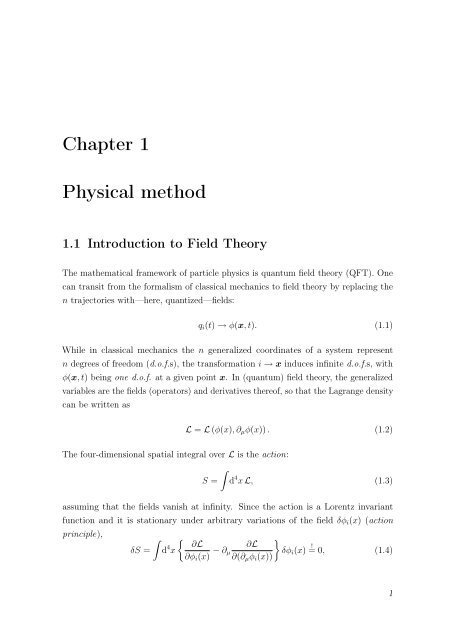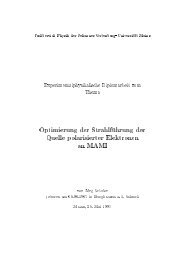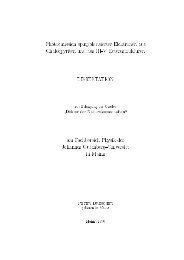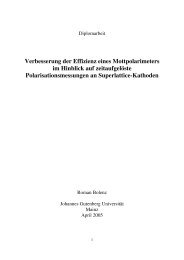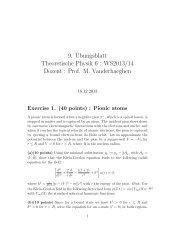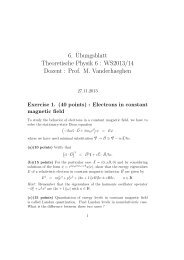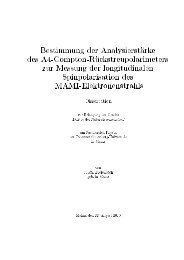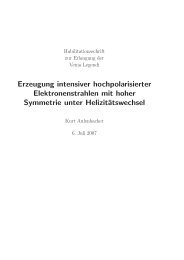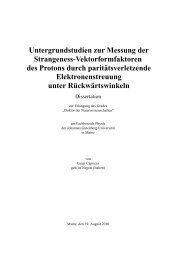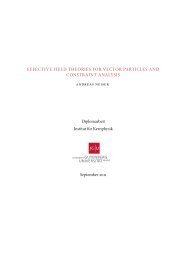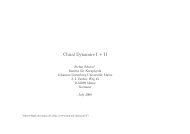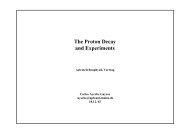Compton Scattering Sum Rules for Massive Vector Bosons
Compton Scattering Sum Rules for Massive Vector Bosons
Compton Scattering Sum Rules for Massive Vector Bosons
You also want an ePaper? Increase the reach of your titles
YUMPU automatically turns print PDFs into web optimized ePapers that Google loves.
Chapter 1<br />
Physical method<br />
1.1 Introduction to Field Theory<br />
The mathematical framework of particle physics is quantum field theory (QFT). One<br />
can transit from the <strong>for</strong>malism of classical mechanics to field theory by replacing the<br />
n trajectories with—here, quantized—fields:<br />
q i (t) → φ(x, t). (1.1)<br />
While in classical mechanics the n generalized coordinates of a system represent<br />
n degrees of freedom (d.o.f.s), the trans<strong>for</strong>mation i → x induces infinite d.o.f.s, with<br />
φ(x, t) being one d.o.f. at a given point x. In (quantum) field theory, the generalized<br />
variables are the fields (operators) and derivatives thereof, so that the Lagrange density<br />
can be written as<br />
L = L (φ(x), ∂ µ φ(x)) . (1.2)<br />
The four-dimensional spatial integral over L is the action:<br />
∫<br />
S = d 4 x L, (1.3)<br />
assuming that the fields vanish at infinity. Since the action is a Lorentz invariant<br />
function and it is stationary under arbitrary variations of the field δφ i (x) (action<br />
principle),<br />
∫<br />
δS =<br />
{ ∂L<br />
d 4 x<br />
∂φ i (x) − ∂ µ<br />
∂L<br />
∂(∂ µ φ i (x))<br />
}<br />
δφ i (x) ! = 0, (1.4)<br />
1


